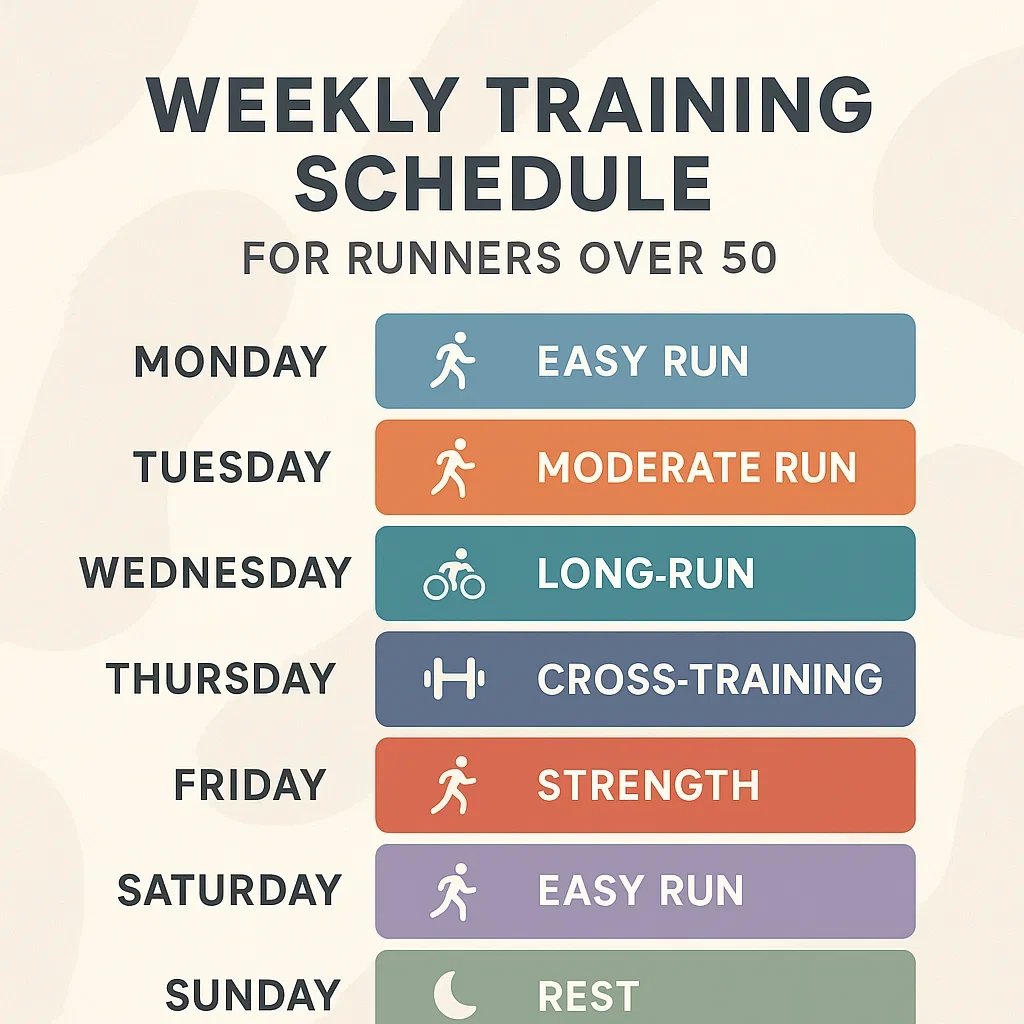Ultra Marathon Training Plan for Over 50: Weekly Schedules & Master Tips
Turning 50 isn’t a finish line—it’s a brand new starting line! More runners than ever are crushing ultras after 50, proving that age is no barrier when you combine smart training, recovery, and a bit of life wisdom. Whether you’re aiming for your first 50K or another 100-mile adventure, this guide lays out the key principles and practical schedules designed specifically for the masters athlete.
- 🔹 Recovery takes longer—muscles, tendons, and bones all need extra care.
- 🔹 VO2-max and muscle mass gradually decline—but you can slow this drop with targeted workouts (VO2-max decline prevention).
- 🔹 Motivation and consistency matter most. It’s about what you do every week—not chasing perfection.
Core Principles for Masters Ultra Training
- ✔️ Emphasize recovery: More rest, more sleep, more protein. It’s essential.
- ✔️ Gradual progression: Never increase weekly mileage more than 10% at a time.
- ✔️ Include regular strength training: Twice a week, year-round.
- ✔️ Mix intensity wisely: 80% easy/steady, 20% moderate-hard.
- ✔️ Monitor fatigue: Track resting HR, HRV, or simply how you feel every morning.
Sample Weekly Ultra Marathon Training Schedule (For Runners Over 50)
Tip: Adjust total mileage and intensity to your current fitness and upcoming goals. If you feel overly fatigued or sore, skip the intensity day or swap in an extra rest day. Consistency and patience are your superpowers!
How to Progress Your Training
- ⏳ Every 3–4 weeks: Add 2–4 km to your long run OR increase weekly volume by 5–10%.
- 🟦 Every 4th week: Cut volume and skip hard sessions for a “deload” week. Prioritize recovery.
- ⬆️ Mix up surfaces: Use soft trails, grass, and rolling terrain to reduce joint stress.
- 🔁 Switch up cross-training: Try swimming, cycling, or hiking to keep things fun and work new muscles.
Key Workouts Explained
- 💪 Strength Training: Squats, lunges, calf raises, and planks prevent muscle loss and protect joints. Twice a week, 20–40 min.
- 🏃♂️ Tempo/Intervals: Moderate to hard efforts teach your body to handle surges and maintain a higher pace—crucial for preserving VO₂-max (VO2-max decline prevention).
- 🥗 Easy Runs: Build aerobic base, aid recovery, and make up the majority of your mileage. Chat pace is key.
- 🌄 Long Runs: Endurance builder! Gradually increase time on your feet, focus on nutrition, hydration, and pacing.
- 🚴 Cross-Training: Less impact, more fun. Keeps you active on recovery days, and helps overall fitness.
Nutrition & Recovery Priorities
- 🍲 Protein: 1.4–2.0g/kg/day, spread throughout the day for muscle repair and recovery.
- 💧 Hydration: Don’t wait until you’re thirsty. Hydrate before, during, and after workouts—especially on long runs.
- 💤 Sleep: The most powerful (and overlooked!) recovery tool. Target 7–9 hours a night if possible.
- 💊 Supplements: Consider vitamin D, B12, omega-3, and creatine—especially if plant-based or as recommended by your doctor. Daha fazla bilgi için best recovery supplements for masters runners.
Common Pitfalls & How to Avoid Them
- ❌ Skipping rest days (“I’m tough!”) –> Solution: Plan recovery as you do your long runs.
- ❌ Ignoring strength work –> Solution: 2x/week minimum, keep it short and focused.
- ❌ Letting little aches linger –> Solution: Address niggles early! Ice, massage, and modify workouts as needed.
- ❌ Chasing high mileage too soon –> Solution: Patience = progress. Most masters thrive on less volume, more quality.
Inspiration: Yes, You Can!
“At 56, I ran my first 100K. The key? Smarter training, more rest, and a focus on the little things—mobility, nutrition, and sleep. You’re never too old to go long.” — Ann, masters ultrarunner
Ready to build your own plan? Download our printable schedule, join a local group, and explore more at ultra marathon masters training.
With the right approach, you can conquer any distance after 50—and enjoy the process every step of the way.
🔥 The Journey Is Yours—And It’s Just Beginning
Every masters runner has a story—sometimes it’s a comeback, sometimes it’s a first adventure, and sometimes it’s simply the love of moving forward. You’ve earned the right to run smart, recover deeply, and celebrate every single milestone.
Remember: No two paths look alike after 50. Your “win” could be finishing your longest run yet, conquering that hilly local race, or just feeling energized when you wake up. Every step is a deposit in your “ultra bank.”
Need motivation? Connect with others! Many masters runners find their greatest joy in group long runs, swapping stories at aid stations, or mentoring newcomers. There’s a vibrant, supportive community waiting for you—online and at every start line.
Curious about how others fit running into busy lives?
Looking for plant-based fueling, injury hacks, or the best new gear for masters?
Explore the rest of our ultra marathon masters training resources or ask questions in the comments below.
We’re here for every chapter of your running journey!
“You don’t stop running because you get old. You get old because you stop running.”
— Unknown, but every masters finisher nods along
So keep showing up. Every sunrise run, every gentle walk, every smart rest day— it’s all part of your lifelong adventure. The best finish lines are still out there, waiting for your next start!

❓ FAQ: Ultra Marathon Training Over 50
🟦 Is it safe to start ultra training after 50?
🟦 How should I adjust my training volume as I age?
🟦 How important is strength training after 50?
🟦 Should I do intervals and speedwork over 50?
🟦 How do I prevent overuse injuries?
🟦 Do I need different nutrition after 50?
🟦 What is the best cross-training for masters?
🟦 Can I still run ultras if I have arthritis or past injuries?
🟦 Is it possible to get faster after 50?
🟦 Where can I find more support for masters ultra training?

About the Author
Lost Pace is an ultramarathon runner, shoe-tester and the founder of umit.net. Based year-round in Türkiye’s rugged Kaçkar Mountains, he has logged 10,000 + km of technical trail running and completed multiple 50 K–100 K ultras.
Blending mountain grit with data, Lost analyses power (CP 300 W), HRV and nutrition to craft evidence-backed training plans. He has co-written 260 + long-form guides on footwear science, recovery and endurance nutrition, and is a regular beta-tester of AI-driven coaching tools.
When he isn’t chasing PRs or testing midsoles, you’ll find him sharing peer-reviewed research in plain English to help runners train smarter, stay healthier and finish stronger.
Ultrarunner · Data geek · Vegan athlete

